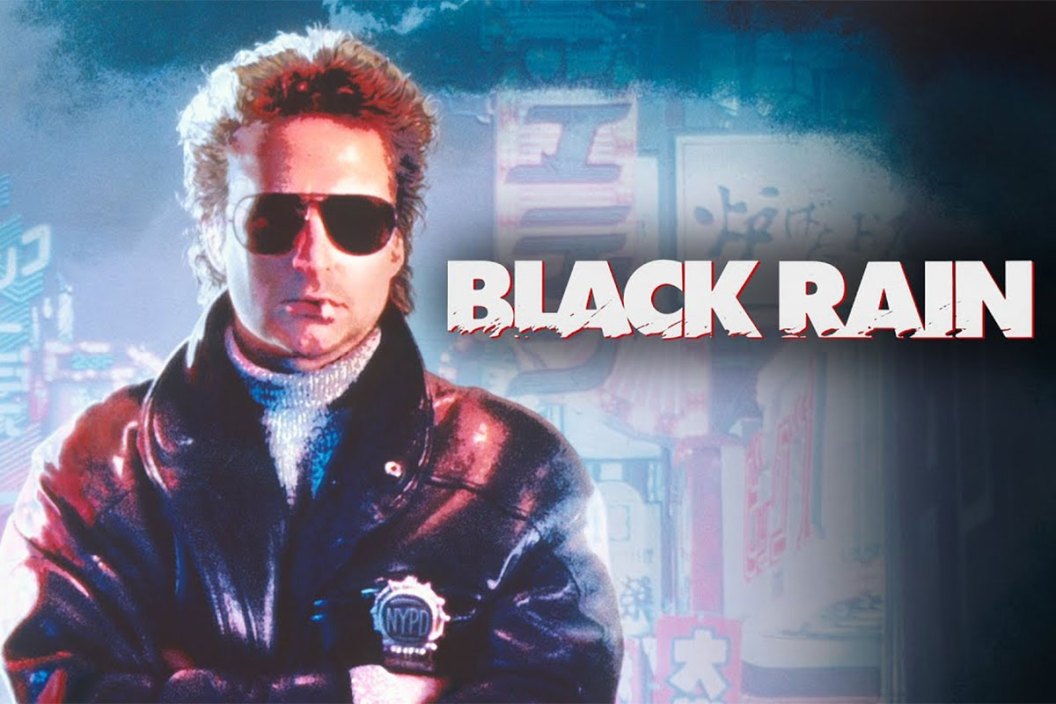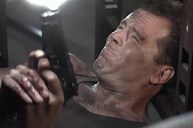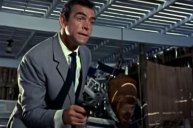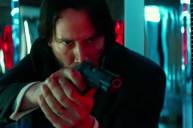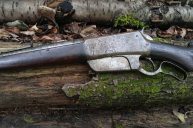If you've never seen this dark late-1980s cop thriller from director Ridley Scott, you really should.
When I was a kid, the box office wasn't dominated by superhero movies and big budget, mostly family friendly fare. Sure there were plenty of tentpole movies, especially in the summers, but the flicks that seemed to get the most attention were tense thrillers with very adult themes, and usually a steamy sex scene or two.
When I think of this era of thrillers, which tended to have a particular darkness and wonderful viciousness to them, movies like Internal Affairs, Basic Instinct, Sleeping With The Enemy, The Hand that Rocks the Cradle come to mind, but I vividly remember my dad being a big fan of a lesser remembered thriller starring Michael Douglas called Black Rain.
I also remember that I was explicitly not allowed to watch it.
Black Rain paired a young Douglas and a very young Andy Garcia, and also lined them up to work with actor Kate Capshaw and director Ridley Scott. With the Alien and Blade Runner director helming the production and Hans Zimmer creating the score, this movie's personnel lineup was quintessential '80s.
The film was written by Craig Bolotin and Warren Lewis, and tells the story of two NYPD detectives who wind up embroiled in an effort to recapture a Yakuza crime boss that escaped from their custody while in New York City. As they tend to do, the crook then flees the United States for Japan.
Not only did the two American cops have to work with police in Osaka, Japan, but the production team had to get used to the Japanese film production process. Rumor has it that caused a good bit of friction while making this motion picture. It was reportedly bad enough for Scott to proclaim he'd never film another movie in the country again.
Even though it came at the tail-end of the '80s, Black Rain has that gritty, dark look provided by cinematographer Jan De Bont, who worked on Die Hard the year before.
The movie did decently well at the box office, grossing $134 million worldwide on a $30 million production budget. But once it was released on VHS, it became a cult classic.
I remember sneaking a peek into the living room while my dad watched it, right at the exact moment that a guy gets slashed up and beheaded in a parking garage by a group of mafia dudes on motorcycles with katanas. It made an impression.
The Firearms of Black Rain
For a cop movie in 1989, the gun choices are both interesting and typical.
A surprising number of both American and Japanese cops carry revolvers as their main sidearm, while the Yakuza gangsters pack arsenals of automatic weapons.
We'll take a closer look at the identifiable firearms from the movie.
Handguns of Black Rain
Det. Sgt. Nick Conklin (Douglas) carries a snub-nose Colt Python with a 2.5-inch barrel. While the NYPD was still in the wheelgun age in 1989, the Python wasn't ever approved for police use, but that never stops a movie from using a cool gun and some NYPD detectives of the era were known to carry unauthorized handguns while on duty.
When Conklin and Charlie (Garcia) arrive in Osaka, they are forced to give up their guns and told they are civilians while in Japan. Conklin turns over his Python and we don't see it again.
Of course, the duo get in a shootout before they're forced to turn over their guns, and we see that Conklin carries two revolvers: the Python in a strong-side holster, and a Colt Detective Special .38 Spl revolver in a small-of-the-back holster.
We even see him perform what was sometimes referred to as a "New York Reload" during the gunfight in Osaka, pulling his backup gun with his free hand after firing the Python empty instead of reloading.
Conklin's partner Charlie Vincent also carries a snub-nose revolver, but he prefers a Smith & Wesson Model 66 with Pachmayr Presentation grips, which he carries for the first half of the movie.
After he is killed in the scene that so traumatized me as a kid, Nick Conklin is given Andy Garcia's Smith & Wesson Model 66 revolver by Inspector Masahiro Matsumoto (Ken Takakura) and he uses it in the big steel factory shootout.
We also see a bunch of the Osaka police officers carrying S&W Model 36 revolvers, presumably standing in for the Japanese Nambu Model 60, which was the official sidearm of police in Japan. Since access to the guns was tightly controlled by the government, it's much easier for filmmakers to use a Model 36 instead, which is extremely similar.
The Smith & Wesson Model 36 is carried by several members of the Osaka Police during the raid on the Yakuza hideout, standing in for the Nambu Model 60. (The Nambu is the official sidearm of Japanese police, but access to the Nambu is tightly controlled, so film-makers often substitute the broadly-similar Model 36.)
However, Matsumoto carries a distinctive and always futuristic-looking Heckler & Koch P7 pistol as his go-to sidearm, which we see him use during the factory shootout. This is the same pistol that Hans Gruber (Alan Rickman) famously uses in Die Hard, though he was rocking the stainless steel version and Matsumoto's is blued.
On the Yakuza side, we see another futuristic Heckler & Koch pistol, though by 1989 it was already an older model. One of Sato's men, Yoshimoto (Jun Kunimura) carries a Heckler & Koch P9S pistol during the big foundry gun battle. The pistol had previously gotten some good screen time as Alex Murphy's sidearm in the beginning of RoboCop and was used by Steven Seagal in Above the Law. Later, the pistol was notably used by Harrison Ford and Sean Bean in Patriot Games, and by Arnold Schwarzenegger in True Lies.
Machine Guns of Black Rain
During the big foundry gunfight, the Yakuza gangsters have a host of full-auto firearms. We see a bunch of them carrying what are supposed to be Heckler & Kock MP5A3 submachine guns, which appear to have been built from converted semi-auto HK94A3s with the barrels cut down.
You can tell because they have a magazine release button instead of a lever behind the magwell. Matsumoto picks up one of the bad guy's MP5s and uses it for much of the gun battle.
Throughout the movie, we also see Yakuza members using Micro Uzi pistols, full-size Uzi submachine guns, and MAC-10s—all very '80s action movie-centric guns to include.
Shotguns of Black Rain
Det. Nick Conklin memorably uses a shotgun to take on Sato, the Yakuza crime boss, at the end of the movie. Sugai's men give him a pump action Stevens 67 shotgun with an extended magazine tube and a sawed-off stock and toss six shells at his feet to go after Sato, but this scene leads to a bit of a continuity error.
Even though Sugai's men gave him six shells, the shotgun runs out of ammo after Conklin fires three shots to kill two Yakuza. He then tosses the shotgun away.
Interestingly, the main unit wasn't able to film the final winery gunfight in Japan because the filmmaker's visas had run out. Instead, they filmed in Napa, California, which is why you see Conklin's shotgun transform into a Remington 870 with a folding stock in some scenes.
You can noticeably see that it's a Remington on Conklin's approach to the tea house. Though this may not have been entirely unintentional.
At the time, Japan's strict gun control rules forced many productions to use flash-paper non guns for such scenes, and Scott wanted real guns firing blanks, which meant it had to be filmed in the U.S.
Though the film may not be on the radar of aficionados who favor quality character development and plot, it was the fifth-highest grossing movie in 1989. It was nominated for two Academy Awards (Best Sound and Best Sound Effects Editing) but only earned a 50% rating on Rotten Tomatoes.
It's worth watching if you've never seen it, and developing your own opinion. Just don't let your kids watch it until they're ready.
NEXT: THE 6 BEST GLOCKS FOR CONCEALED CARRY
WATCH
